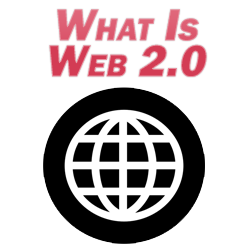Web 2.0 is a term which you’ve likely heard before but may never have learned exactly what it refers to as I myself have heard it used in a number of different situations with different definitions tacked on to it.
What Is Web 2.0
Once considered a buzz term, the term Web 2.0 itself first surfaced 6 or so years ago when the way in which people used and were able to use the internet began to evolve and a number of sites in particular began to garner attention and popularity on the net.
The term can be used to describe this “second generation” of the internet which really took off in the middle of the last decade and is characterized as being decidedly more interactive, user centered, sharing friendly, and not least of all complex.
Web 2.0 Examples
Web 2.0 is best defined through examples, and you’re likely familiar with most Web 2.0 examples I could give today because they’re so engrained in our culture.
- Social Networks – Facebook, Twitter, LinkedIn are all examples as they all promote sharing, interactivity, and a personalized user experience.
- Blogs – This interactive blog site itself is an example.
- Video/Image/Media Sharing Sites – Think YouTube or Flickr.
- Wikipedia – Wikipedia is one of the quintessential examples. This is a site where people can add their own information on topics for sharing with other people.
- Article Directories – Ezine Articles, Go Articles, etc.
- RSS Feeds – Website content syndication so that it’s available in other contexts is another example in some circles.
Whereas the first generation of the internet was very one dimensional and a place more for reference than anything else (if anyone can remember back that far), this new generation of the internet is completely interactive, and ultimately the term Web 2.0 itself was simply implemented and popularized by those in the business of the internet/webmasters to note the substantial but otherwise unnoticed progression of the internet from one state to the next.
